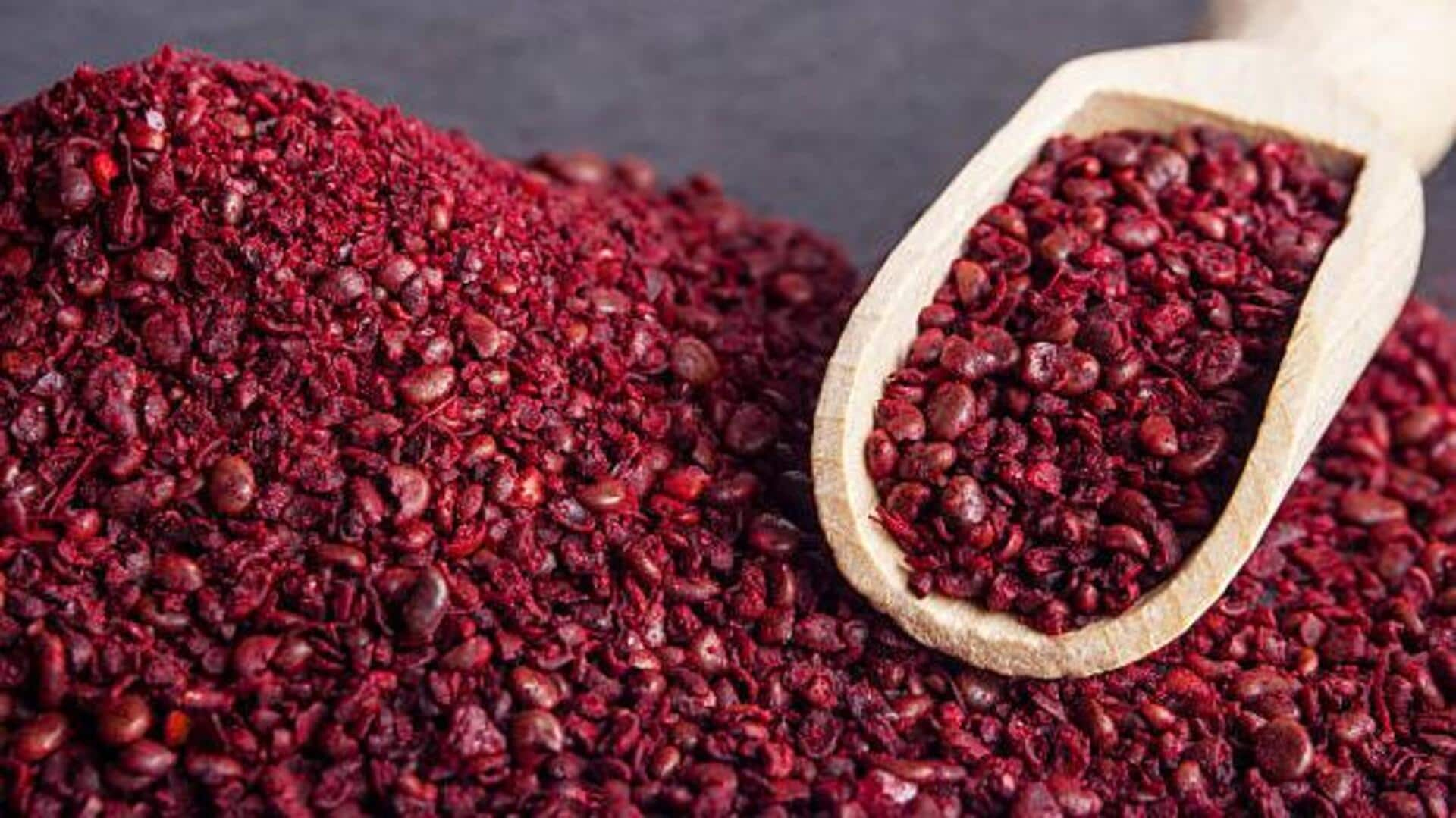
Sumac: The secret spice your kitchen is missing
What's the story
Sumac, a tangy and lemony spice, is a pantry essential that can take vegetarian dishes to the next level. Famous for its vibrant color and unique flavor, sumac is used in various cuisines across the globe. It not just adds a refreshing taste but also boosts the nutritional value of your meals. Here's how you can use sumac to spice up your vegetarian recipes.
Tip 1
Enhance salads with sumac
Adding sumac to salads gives them a zesty twist that elevates the overall flavor profile. Its tartness goes well with fresh vegetables like tomatoes, cucumbers, and onions. Just sprinkle some sumac over your salad or mix it into dressings for an extra layer of complexity. This simple addition can make even the most basic salad feel gourmet.
Tip 2
Flavorful dips and spreads
Sumac is an excellent ingredient to include in dips and spreads like hummus or tzatziki. Its citrusy notes complement the creamy textures of these dishes perfectly. By mixing in some sumac, you can create a dip that's not only delicious but also visually appealing with its vibrant red hue. Serve it at gatherings or enjoy it as a snack with pita bread.
Tip 3
Roasted vegetables with a twist
Roasting vegetables brings out their natural sweetness, and adding sumac gives them an unexpected twist. Sprinkle sumac on veggies like potatoes, carrots, or cauliflower before roasting them to add depth to their flavor. The heat from roasting enhances sumac's tangy notes, making every bite delightful.
Tip 4
Spice up grains and legumes
Grains like quinoa or bulgur wheat and legumes like chickpeas or lentils can be elevated by adding sumac into the mix. It adds an aromatic touch that complements these ingredients beautifully. Whether you're making a grain bowl or a hearty stew, incorporating sumac will give it an exciting flavor dimension without overpowering other elements in the dish.